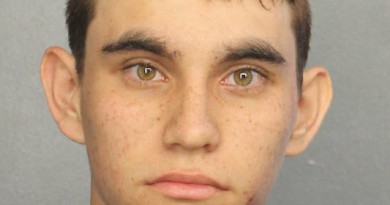Anthrax Murders
Presumed Anthrax murderer Dr. Bruce Ivins committed suicide by overdosing on multiple medications on July 29, 2008, as authorities closed in on him as the culprit in the 2001 mailing of letters laced with the deadly bacteria. Toxicology screening detected the psychotropic medications Celexa [citalopram hydrobromide], Cymbalta [duloxetine hydrochloride], and Seroquel [quetiapine fumarate] in his system at the time of death.
According to the AMERITHRAX Investigative Summary, “In fact, his prescription for the anti-depressant Celexa was doubled shortly before the mailings.”
Although authorities made a persuasive case based on both scientific and circumstantial evidence that Dr. Ivins was in fact the culprit, the National Academy of Sciences questioned in its report whether the Federal Bureau of Investigations (FBI) reached appropriate scientific conclusions.
While not questioning Dr. Ivins’ guilt, Parents Against Pharmaceutical Abuse (PAPA) have questions, too, about some conclusions reached in the Department of Justice’s (DoJ) investigative summary. For instance, based on the doubling of Dr. Ivins’ dosage of Celexa, the DoJ makes the following unsubstantiated leap in logic: “By the summer of 2001, his depression had increased.”
Another hypothesis the FBI’s Behavioral Analysis Unit (BAU) seemingly failed to consider is that serious adverse events associated with selective serotonin reuptake inhibitors (SSRIs) have been reported to increase when starting, changing the dose, or discontinuing the drugs.
Likewise, the agency appears not to have considered the hypothesis of tachyphylaxis, a well-documented phenomenon in the scientific literature, characterized by a rapidly diminishing response to a drug, rendering it less effective. Even pharmaceutical industry-sponsored scientists estimate that 1 in 4 patients taking SSRIs experience antidepressant tachyphylaxis (ADT).
In sum, the FBI’s BAU seems not to have considered that: 1) The doubling of the dosage of Celexa “shortly before the mailing” may have in fact precipitated the mailings; and 2) Dr. Ivins’ depression may not have been worsening, but rather the efficacy of his treatment may have been decreasing.
Moreover, Celexa is not the only medication that may have influenced Dr. Ivins’ behavior, as evidenced by another passage in the investigative summary: “Again, the next week, he wrote Former Colleague #1: ‘Right now, anti-anxiety medication such as diazepam (valium) is helpful.'”
The FDA-approved label on Celexa warns of treatment emergent or worsening agitation, aggressiveness, akathisia, hostility, impulsivity, hypomania and mania.
The FDA-approved label on Valium warns of treatment emergent or worsening psychiatric and paradoxial reactions, including stimulation, acute hyperexcited states, agitation, aggressiveness, rage, hallucinations, psychoses, and delusions.
Victims: Joseph P. Curseen, Ottile Lundgren, Thomas L. Morris, Jr., Kathy Ngyuen, Robert Stevens



